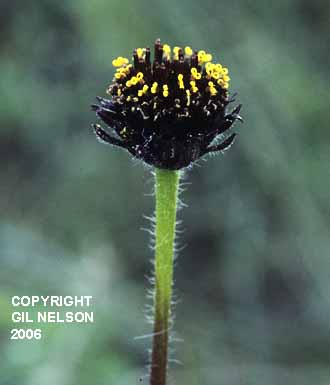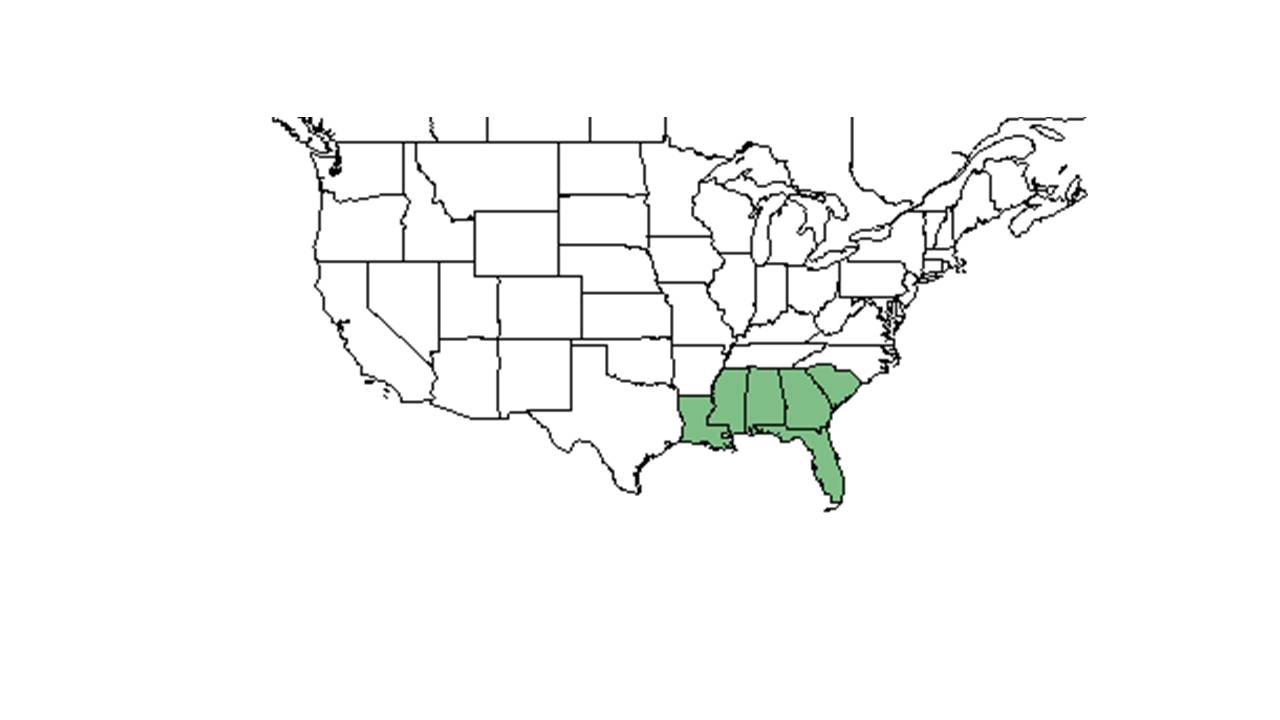Difference between revisions of "Helianthus radula"
(→Description) |
Ruthstetler (talk | contribs) (→References and notes) |
||
| Line 39: | Line 39: | ||
==Photo Gallery== | ==Photo Gallery== | ||
==References and notes== | ==References and notes== | ||
| + | Florida State University Robert K. Godfrey Herbarium database. URL: [http://herbarium.bio.fsu.edu http://herbarium.bio.fsu.edu]. Last accessed: June 2014. | ||
| + | |||
| + | Collectors: Loran C. Anderson, Roomie Wilson, Delzie Demaree, C. Ritchie Bell, F. H. Sargent, Samuel B. Jones, John W. Thieret, Almut G. Jones, A. F. Clewell, R. K. Godfrey, Bruce Hansen, JoAnn Hansen, Robert L. Lazor, R. Kral, J. P. Gillespie, R. E. Perdue, Jr., Paul L. Redfearn, Jr., Kurt E. Blum, D. B. Ward, S. S. Ward, John B. Nelson, G. R. Knight, Cecil R Slaughter, Nancy E. Jordan, R. A. Norris, and R. Komarek. | ||
| + | |||
| + | States and Counties: Florida: Bay, Calhoun, Citrus, Flagler, Franklin, Gadsden, Holmes, Jefferson, Lake, Leon, Levy, Liberty, Madison, Nassau, Okaloosa, Orange, Osceola, Putnam, St Johns, Taylor, Wakulla, and Walton. Georgia: Thomas. Louisiana: Tangipahoa and Washington. Mississippi: Jackson, Lamar, and Pearl River. South Carolina: Colleton. | ||
Revision as of 10:54, 14 July 2015
| Helianthus radula | |
|---|---|

| |
| Photo was taken by Gil Nelson | |
| Scientific classification | |
| Kingdom: | Plantae |
| Division: | Magnoliophyta - Flowering plants |
| Class: | Magnoliopsida – Dicotyledons |
| Order: | Asterales |
| Family: | Asteraceae ⁄ Compositae |
| Genus: | Helianthus |
| Species: | H. radula |
| Binomial name | |
| Helianthus radula (Pursh) Torr. & A. Gray | |

| |
| Natural range of Helianthus radula from USDA NRCS Plants Database. | |
Contents
Description
Common Name: rayless sunflower
Distribution
Ecology
Habitat
It can live in loblolly or slash pine communities.[1] Censused on mid-slope at the Wade Tract, GA.[2] “The fire-maintained forest structure is savanna-like with an open canopy of P. palustris and P. elliotii Engelm. (slash pine), little to no subcanopy, and diverse ground cover dominated by grasses…and forbs…”[3] Commonly found species in the forests of camp Shelby Training Site within Pine Woods subprovince of the Gulf Coastal Plain physiographic region of Mississippi.[1]
Phenology
Seed dispersal
Seed bank and germination
Fire ecology
Wade Tract has been burned biennially.[2]
Pollination
Use by animals
Diseases and parasites
Conservation and Management
Cultivation and restoration
Photo Gallery
References and notes
Florida State University Robert K. Godfrey Herbarium database. URL: http://herbarium.bio.fsu.edu. Last accessed: June 2014.
Collectors: Loran C. Anderson, Roomie Wilson, Delzie Demaree, C. Ritchie Bell, F. H. Sargent, Samuel B. Jones, John W. Thieret, Almut G. Jones, A. F. Clewell, R. K. Godfrey, Bruce Hansen, JoAnn Hansen, Robert L. Lazor, R. Kral, J. P. Gillespie, R. E. Perdue, Jr., Paul L. Redfearn, Jr., Kurt E. Blum, D. B. Ward, S. S. Ward, John B. Nelson, G. R. Knight, Cecil R Slaughter, Nancy E. Jordan, R. A. Norris, and R. Komarek.
States and Counties: Florida: Bay, Calhoun, Citrus, Flagler, Franklin, Gadsden, Holmes, Jefferson, Lake, Leon, Levy, Liberty, Madison, Nassau, Okaloosa, Orange, Osceola, Putnam, St Johns, Taylor, Wakulla, and Walton. Georgia: Thomas. Louisiana: Tangipahoa and Washington. Mississippi: Jackson, Lamar, and Pearl River. South Carolina: Colleton.
- ↑ 1.0 1.1 Yager, L. Y., M. G. Hinderliter, et al. (2007). "Gopher tortoise response to habitat management by prescribed burning." The Journal of Wildlife Management 71: 428-434.
- ↑ 2.0 2.1 Gilliam, F. S., W. J. Platt, et al. (2006). "Natural disturbances and the physiognomy of pine savannas: A phenomenological model." Applied Vegetation Science 9: 83-96.
- ↑ Kirkman, L. K., M. B. Drew, et al. (1998). "Effects of experimental fire regimes on the population dynamics of Schwalbea americana L." Plant Ecology 137: 115-137.